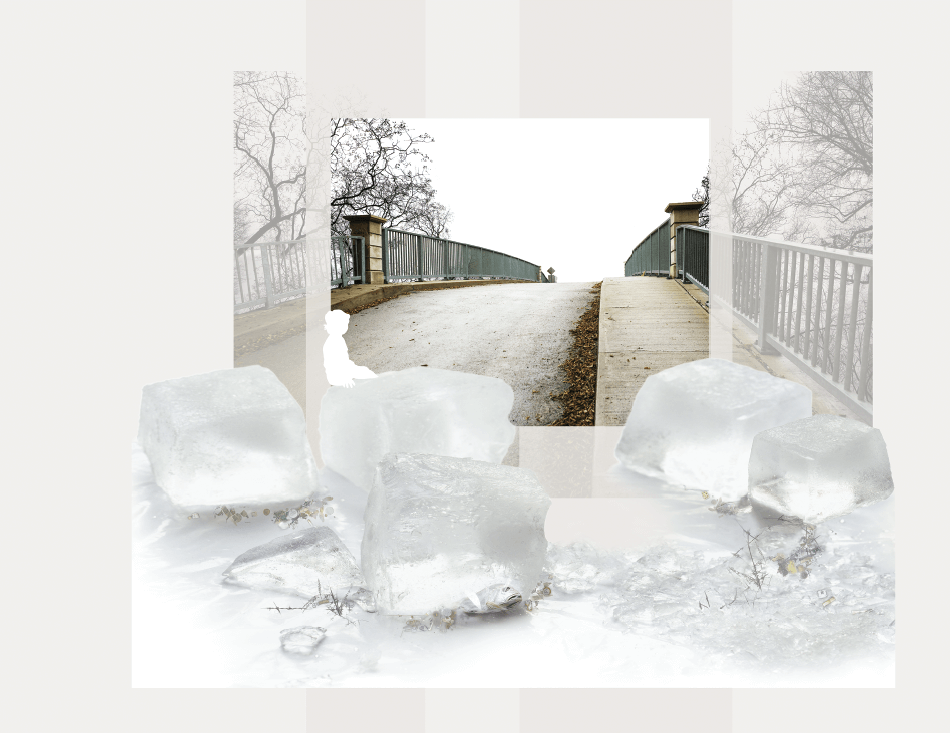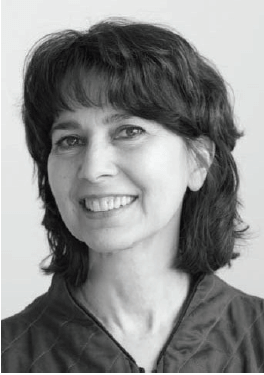Above: Detail from Archie Rand. 326: To Send the Impure from the Temple (Numbers 5:2), 2001-2006. From the series The 613. Acrylic on canvas. 20 x 16 in. Photo by Samantha Baskind
Artists on Their Art
Archival inkjet print on paper and film, markers
November 12, 2018 – February 12, 2019
Curator: Evelyn Tauben
www.fentster.org #fentster
I had the privilege of being asked by curator Evelyn Tauben to create an art installation for a unique exhibition space located at 402 College Street, Toronto, Canada. FENTSTER (Yiddish for “window”) is an arena for “presenting site-specific installations of contemporary art connected to the Jewish experience.” Evelyn and I spoke at length a few times about possible directions I could take in developing work that referenced my Jewish heritage. She was intrigued by my experience of growing up at Camp Naivelt, a Canadian-Jewish socialist summer camp and cottage grounds.

Lynne Heller. Suspended, 2018. Photographic installation with collaged imagery, pigment-based inks, archival paper, mylar, corplast, clear cling, magnets. 66 x 78 x 5 in.
The process of finding a visual representation of Naivelt and my childhood was an intriguing proposition. Naivelt and its history are rich in so many ways. People and community were its primary asset, but also it was a place of culture, music, dance, arts and crafts, architecture, a tiny bit of sports—swimming at the very least. And, of course, politics were paramount. However, right from the beginning, Naivelt was an experience of and about nature. It was conceived and developed by women who were looking for ways to give immigrant working-class children an alternative to inner-city life in the summertime. Naivelt was a summer sanctuary for me, an inner-city kid myself, forty years after its establishment. It was a place of delicious freedom to run and explore, learn about life and people, but at the same time it was safe and comforting. Much has changed in Brampton, Ontario, Canada, where the camp is located, since the 1960s and 1970s, when I was there. Where there were farmers’ fields and orchards there are now tracts of housing, but Naivelt continues to be a place set apart, where nature is still omnipresent.
Sitting on an ice floe, looking back at the bridge was the memory I chose to encapsulate my experience of that day.
In response to Evelyn’s prompts for work that reflected Naivelt, I decided to develop a piece of work about nature which led me to a particularly vivid memory I have of visiting camp with my family in the offseason, during early spring. Our family took a drive out to Naivelt one day and happened upon an incredible natural phenomenon. The Credit River, which runs through the property, is usually pretty sleepy in the summer. It does, though, have a spring breakup that can sometimes be quite convulsive. The river had thrown huge chunks of ice, up to three to five feet deep, many meters from its banks. The fields around the river were strewn with ice floes. The place looked like a salt mine. The whole family was mesmerized by the sight. My dad lifted me up onto one of the pieces of ice and I remember looking down into it and realizing that there was debris frozen into place. It was a dead fish staring back at me out of the ice that made the biggest impression on me.
There is a bridge which crosses over the Credit River which was a fundamental entry point, bottleneck, and occasional impediment to getting into Camp Naivelt. It was iconic. Sitting on an ice floe, looking back at the bridge was the memory I chose to encapsulate my experience of that day. I started the work by traveling out to Camp Naivelt, a journey I haven’t taken for many years, to take photographs. From those photographs, I created a layered installation of digital collage for the piece. The imagery was printed at a large scale (66” h x 78” w x 5” d) to address the space and viewing experience. I was challenged with the issue of printing out a digital collage, work that was subtly layered on the computer screen. Emulating the layered quality of the digital version was tricky as Evelyn and I grappled with suspending layers of imagery of various shapes and opacities.
Along with the suspended layers, the window of the gallery space had the imprint of the city’s graffiti artists. The glass had been incised with subtle marks and lines. I decided to highlight the marks by using paint to draw into and along with the lines that others had left behind. This added another layer to the piece that helped to recreate the sense of a multilayered image.
The focal point of the cutout of the child’s silhouette adds a poignancy to the piece as it points to absence by the lack of detail and the ghostly white against the textured bridge and ice. The work was principally displayed during the winter months and played into the cold temperatures of the Toronto climate—frozen in time. I dedicated the work to Cindy Rosenbloom, a Naivelt childhood friend, who died at an early age due to a bicycle accident.

Lynne Heller is a post-disciplinary artist, designer, educator and academic. She is adjunct professor at OCAD University, co-director of the Data Materialization Studio, affiliate member of Graduate Studies at the University of Toronto and reviews editor for Virtual Creativity. She is principal investigator of the SSHRC-funded project, Thinking through Craft and the Digital Turn.